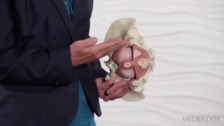Bladder Control: Stress Incontinence and Pelvic Floor Muscle Training
Presented by Cynthia E. Neville
12-Month Subscription
Unlimited access to:
- Thousands of CE Courses
- Patient Education
- Home Exercise Program
- And more
Urinary incontinence (UI) is a worldwide problem associated with negative rehabilitation outcomes for adults with a wide range of orthopedic and neurologic diagnoses and across the spectrum of rehabilitation settings. Physical and occupational therapists play an important if not critical role in identifying and treating bladder control problems, yet they frequently fail to identify UI or provide recommended interventions. This course will describe the problem of stress incontinence using a patient case study. The functional anatomy of the pelvic floor will be explained, and the exercise physiology of pelvic floor muscle training will be discussed. Participants will learn basic evaluation and non-invasive interventions to improve pelvic floor muscle function and bladder control to improve rehabilitation outcomes.
Meet your instructor

Cynthia E. Neville
Dr. Cynthia (Cindy) Neville is an assistant professor of physical therapy at Mayo Clinic Alix School of Medicine in Jacksonville, Florida. She is a women’s health clinical specialist (WCS), board-certified by the American Board of Physical Therapy Specialties. Her outpatient clinical practice at Mayo Clinic Florida primarily…
Chapters & learning objectives

1. Scope of Bladder Control Problems
This chapter will discuss the scope of bladder control problems and introduce a standard outcome measure that can be used to identify them in adults.

2. Stress Incontinence (Activity Related Incontinence)
This chapter will explain the etiology of stress urinary incontinence, and differentiate stress urinary incontinence from other forms of incontinence.

3. Functional Anatomy of the Pelvic Floor
This chapter will explain the anatomy and physiology of the lower urinary tract and the pelvic floor.

4. Pelvic Floor Rehabilitation
This chapter will explain the exercise physiology of pelvic floor muscle training and its application to bladder control problems.

5. Case Study
This chapter will describe a case study and outcomes of an elder woman experiencing stress UI.